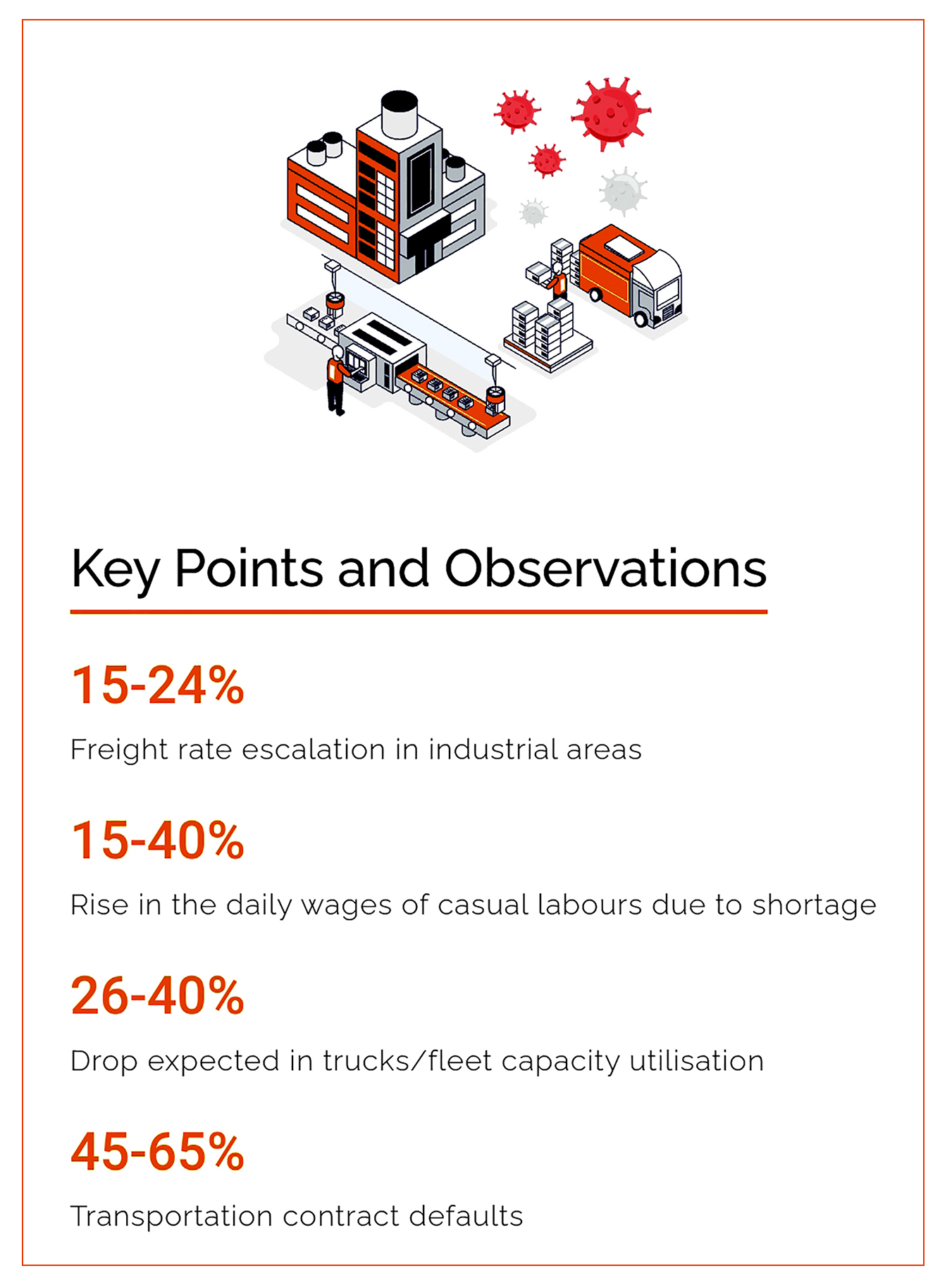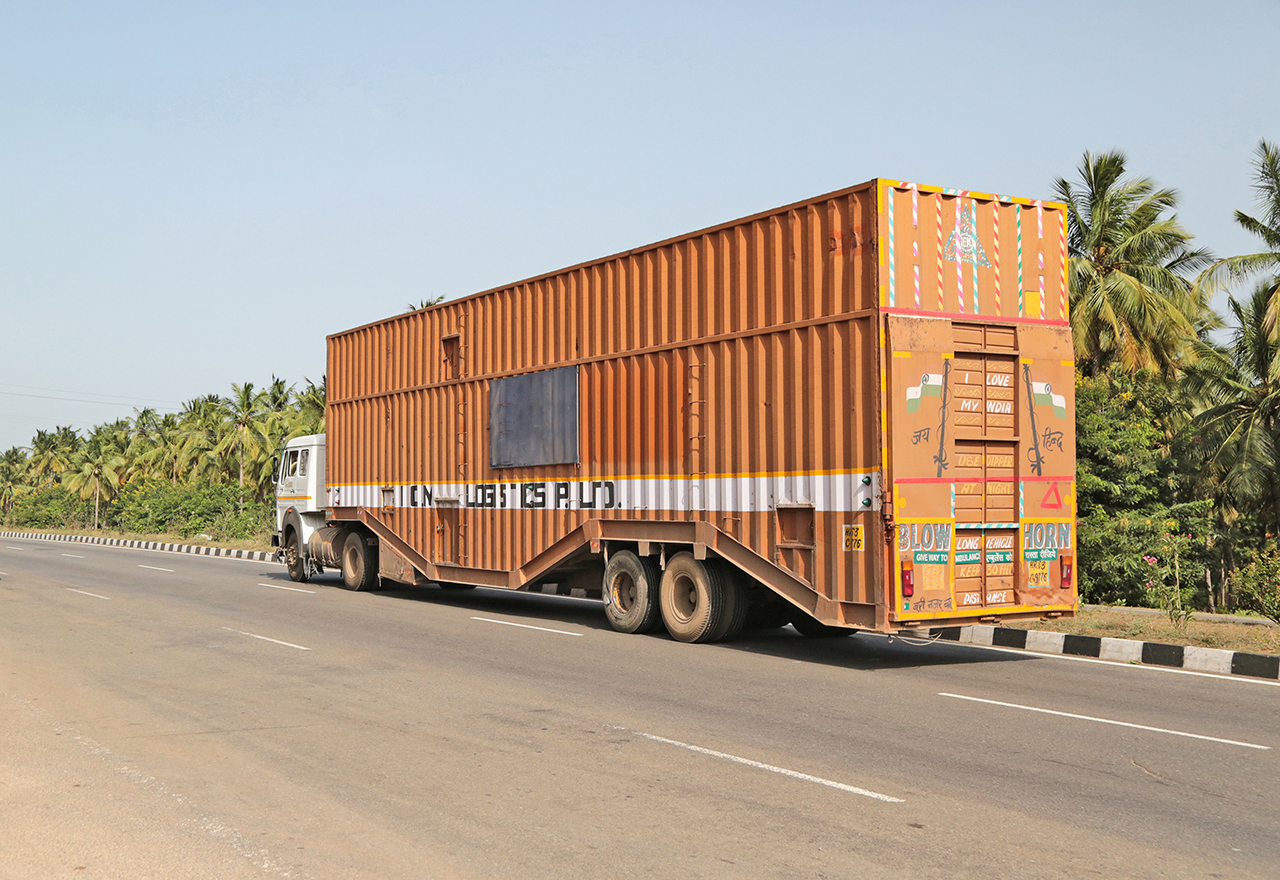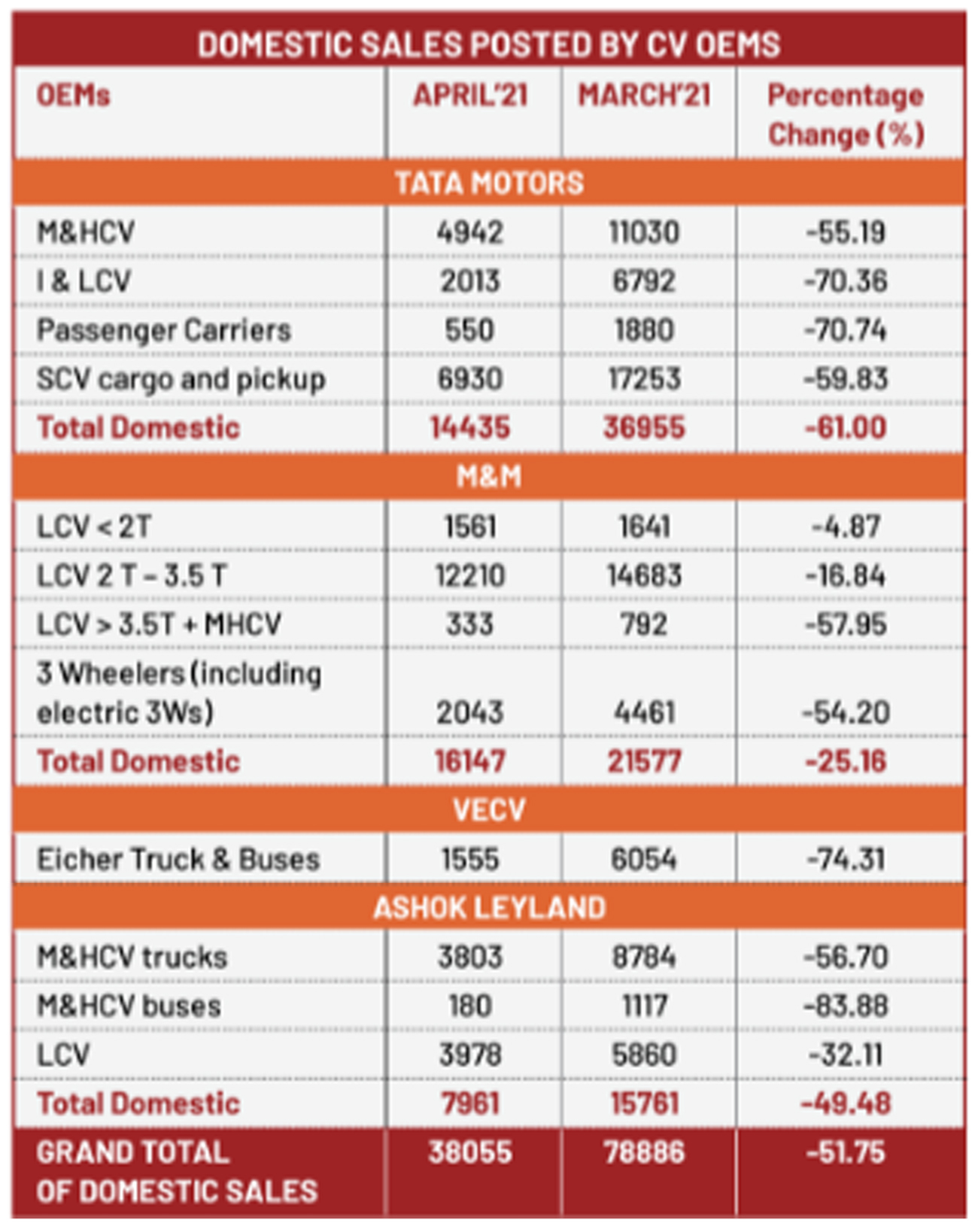The second wave of COVID-19 has started to leave its mark on vehicle sales. While, for many OEMs the year-on-year April sales would appear positive, given there was hardly any sales in April 2020 due to a nation-wide lockdown, most companies have seen sales decline in April 2021 as compared to March 2021, notes Rajesh Rajgor
The CV OEMs are back under pressure as sales have sharply fallen in April’21 after signs of revival in the first three months of the calendar year. While for many OEMs the year-on-year April sales would appear positive, given there was hardly any sales in April 2020 due to a nation-wide lockdown, most companies have seen sales decline in April 2021 as compared to March 2021.

Tata Motors’ domestic commercial vehicles sales stood at 14,435 units in April’21 compared to 36,955 in March’21, falling sharply by 61 percent. The company’s total domestic sales across all categories in April’21, stood at 39,530 units compared to 66,609 units in March’21.
For Ashok Leyland, sales were down by 50.51 percent month on month for Ashok Leyland, which registered sales figures of 7,961 units in April’21 compared to 15,761 in March’21. The company’s April sales included 3,803 M&HCV trucks, 180 M&HCV buses and 3,978 LCVs.
VE Commercial Vehicles (VECV) recorded sales of 2,145 units in April 2021 (YTD 2,145 units) as compared to 85 units in April 2020 (LYTD 85), recording growth of 2423.5% (YTD growth 2423.5 %). This includes 2,096 units of Eicher brand and 49 units of Volvo brand.
The April’21 sales figure in the domestic CV market for Eicher branded trucks and buses stood at 1,555 units which is a sharp drop of 74 percent compared to the superlative March’21 figures of 6,054 units.
For Mahindra & Mahindra, LCVs led the pack in the total domestic sales from its wide commercial vehicle offering. The company sold 1,561 LCVs (under 2 ton), 12,210 units of LCVs in 2T-3.5 T category, 333 units of LCVs above 3.5 ton including M&HCVs and 2,043 three wheelers (including electric three wheelers) in April’21 to mark a total of 16,147 units which was still down by 25.16 percent compared to its sales figure of 21,577 in March’21.

Economic impact
According to Veejay Nakra, Chief Executive Officer, Automotive Division, M&M Ltd., “With the increase in lockdown restrictions in many parts of the country, we foresee continuing supply chain related production challenges. While demand remains good, there would be some impact in the first quarter as a result of low customer movement and dealership activity due to the lockdown restrictions.”
While many transporters have come forward and offered their network of trucks and warehouses for oxygen cylinders and COVID related medical storage, distribution and transportation for free has impacted the economy.
According to a case study brought forward by FreightFox, a company delivering powerful analytics and insights to help manufacturers and transporters work transparently in Indian logistics eco-system, there is a 15-24 percent drop in freight rate escalation in industrial areas. There has also been rise to the pay of daily wage workers due to shortage by 15-40 per cent. Truck capacity utilisation has dropped between 26-40 percent and could lead to transportation contract default in tune of 45-65 percent due to the second wave of COVID-19 that has severely impacted manufacturing, movement, storage and flow of goods.

SIAM echoes sentiments
Kenichi Ayukawa, SIAM President, informed: “The Indian automobile industry continues to work hard, amidst the challenges of COVID second wave, to maximise production and sales, while ensuring safety of its people, partners and customers. We would like to thank and compliment the Government for a massive nation-wide vaccination drive and also for allowing vaccination of our employees in the factory premises. On the sales front, a deep structural slowdown in the industry even before the pandemic, combined with the impact of COVID-19 in 2020-21, has pushed all vehicle segments back by many years. Recovery from here will require time and efforts, by all stakeholders. There is uncertainty in the value chain owing to semiconductors, lockdowns and raw material. In an environment of uncertainty, instead of trying to predict the future, we will all work hard to create it.”
It remains to be seen, how the pouring help to India, from all sides, related to the supply of oxygen and vaccines improves the overall sentiments and in turn the domestic commercial vehicle sales. Until then, the CV OEMs will have to be better prepared to deal with the crisis this time, amid muted sentiments and disrupted demand.